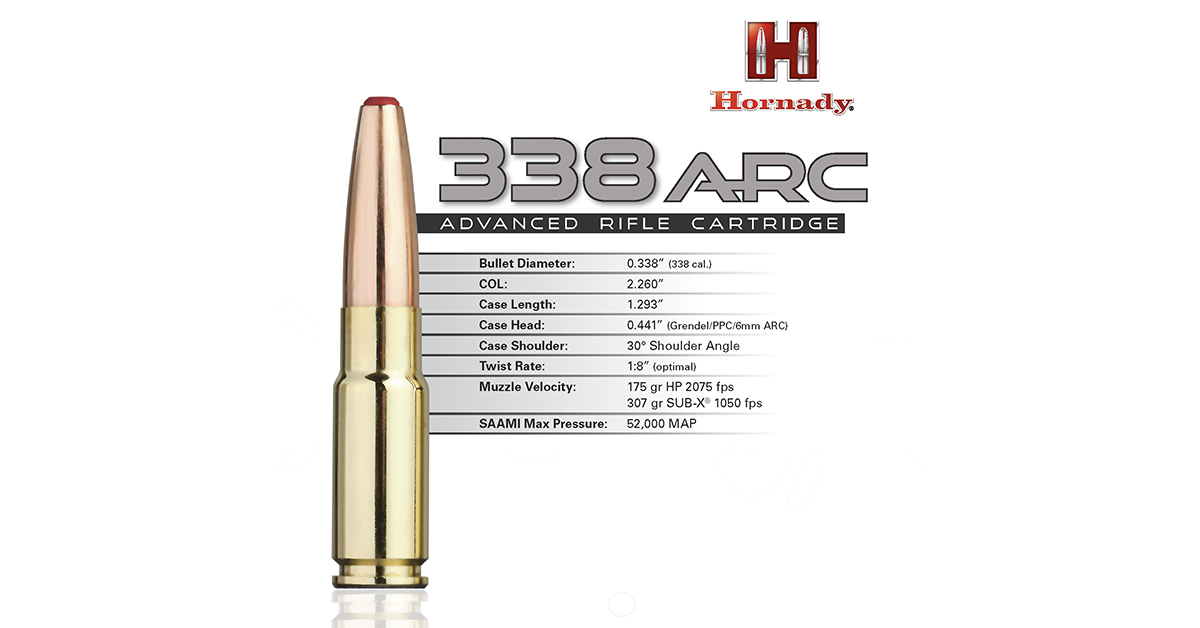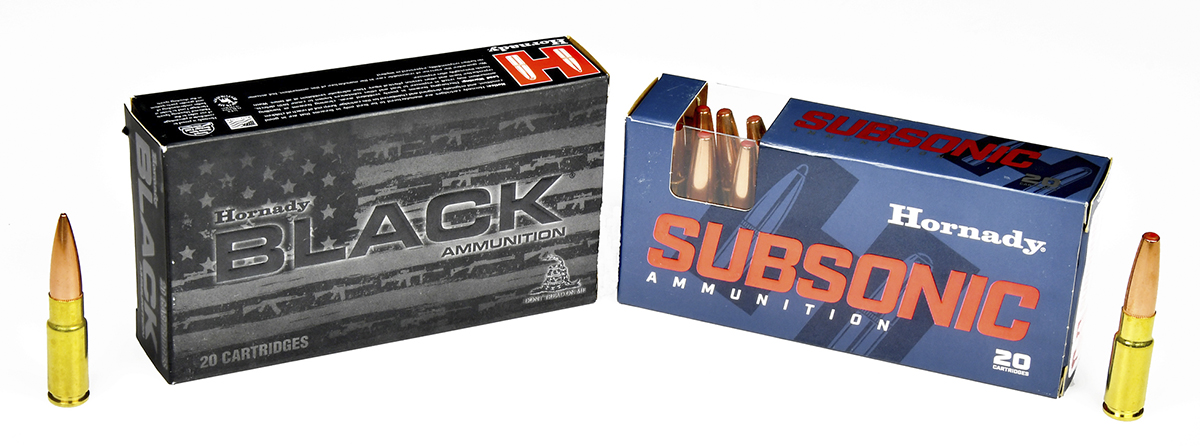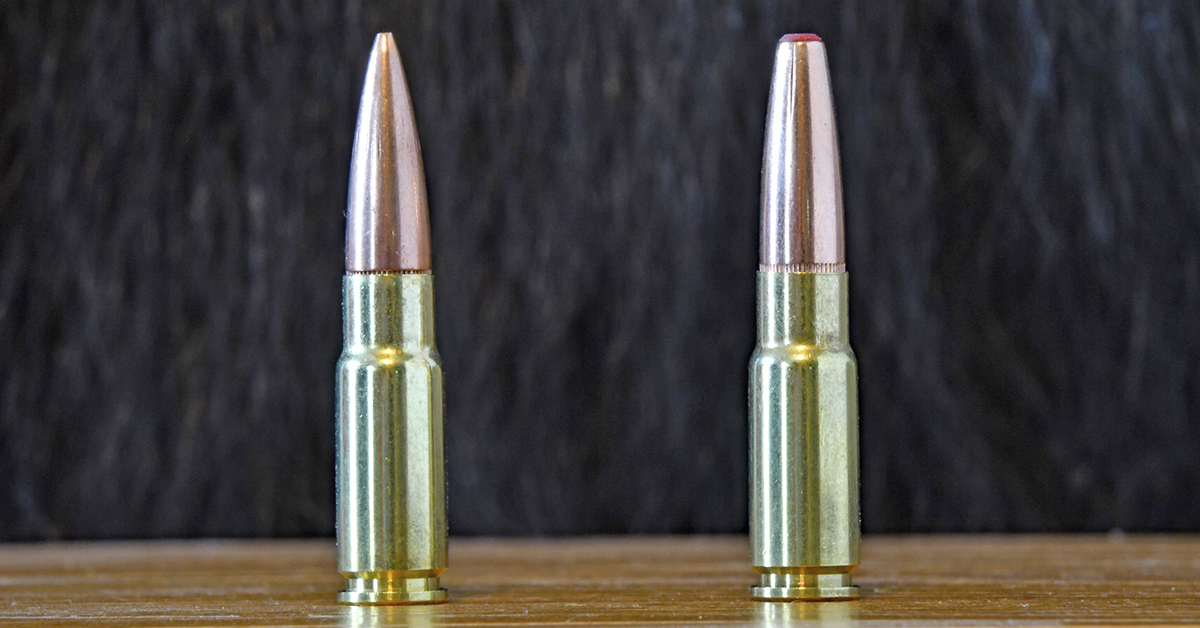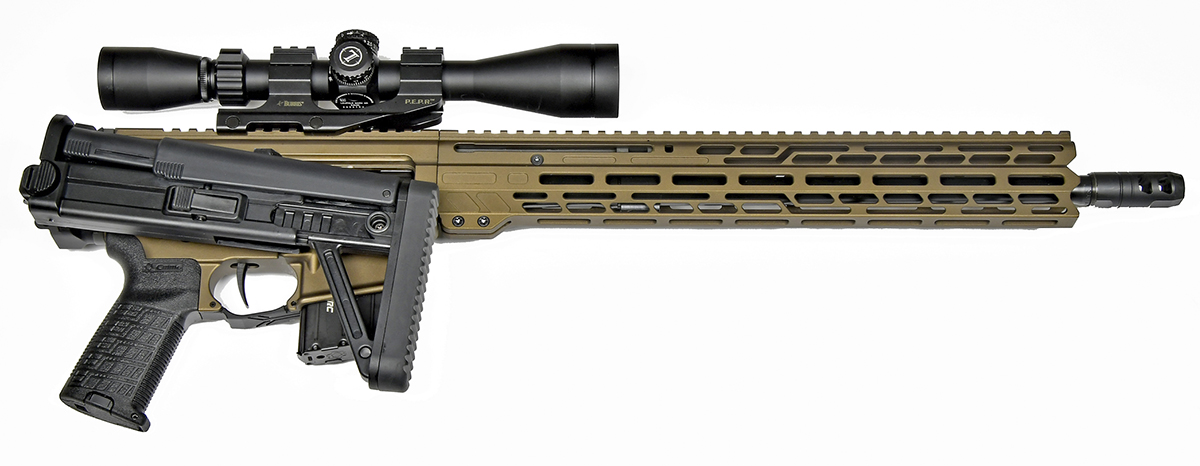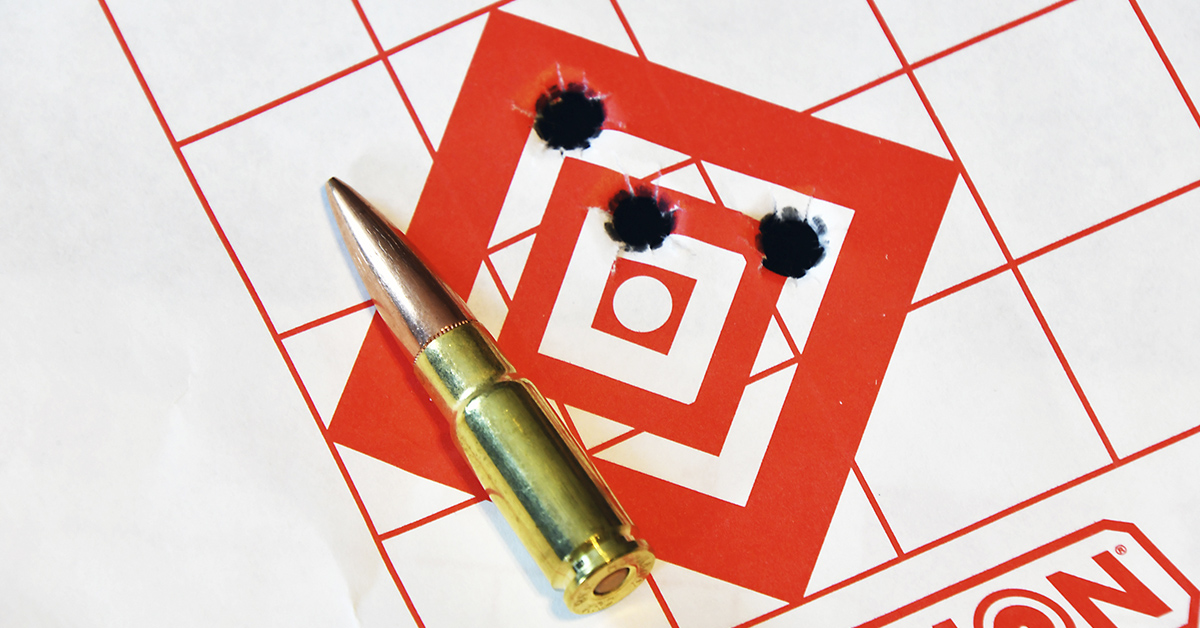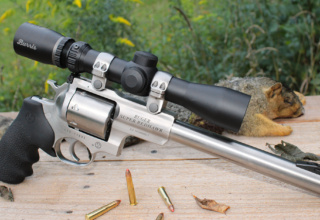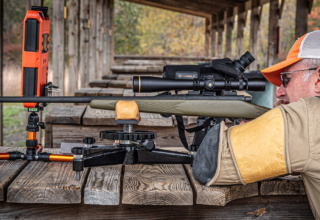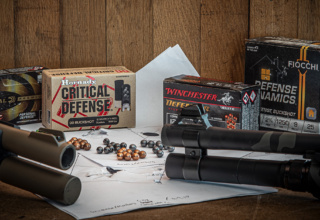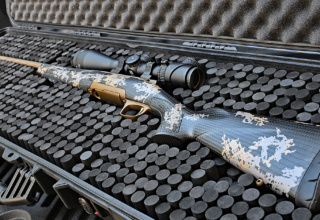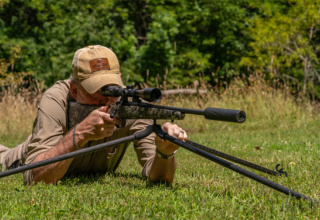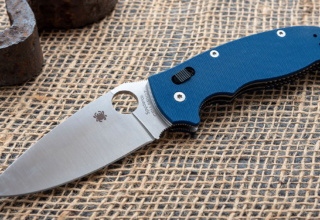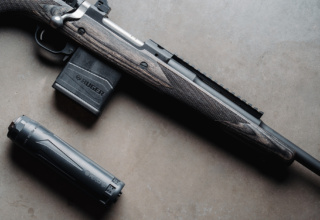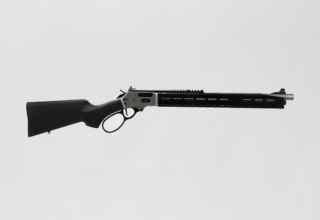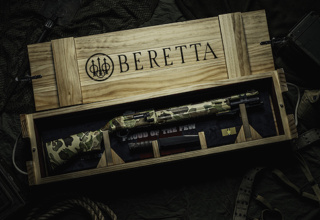Will Hornady’s spicy upstart loading kick the popular .300 BLK in the shins? Our author’s .338 ARC vs. .300 BLK test hints there may be a new boss in town.
by Mike Dickerson
I have never been a huge fan of the .300 Blackout because I am first and foremost a hunter, and I have always found .300 Blackout accuracy and performance to be lacking for my preferences in the guns I’ve tested. That’s why I was intrigued when Hornady announced the new .338 ARC (Advanced Rifle Cartridge).
Would it perform better than the .300 BLK? As I quickly discovered, the cartridge was designed to do precisely that.
Like the .300 BLK, the .338 ARC is designed to function in AR-15 platforms (bolt guns are being made for it as well). The .300 BLK uses a .308-diameter bullet while the .338 ARC employs a .338-diameter bullet. That has led some to compare the .338 ARC to the 8.6 BLK, which also uses a .338-diameter bullet, but that’s a bit of an apples-to-oranges comparison because the 8.6 BLK is designed to work in bulkier AR-10 platforms. Unlike the .300 BLK, which was initially designed for a military customer, the .338 ARC was designed by the ever-inventive engineers at Hornady to be a versatile cartridge for many applications, but with hunters in mind.
The .300 BLK uses a shortened and necked-up .223/5.56 case. Converting a .223-chambered AR-15 to .300 BLK requires a new barrel and, in some cases, a new gas block. The .338 ARC’s parent case is the 6.5 Grendel. Building a .338 ARC upper basically requires a new barrel and a commonly available Type 2 bolt face. The .338 ARC uses widely available 6.5 Grendel/6 ARC magazines.
Both cartridges are offered in supersonic and subsonic loads. To gain any meaningful perspective, you must look at the performance for both types of loads. The forte of the .300 BLK is the ability to shoot both supersonic and subsonic loads from the same platform, but that often requires tuning the gas system in an AR-15 so that the gun runs properly with one load or the other. There’s a big pressure differential between .300 BLK supersonic and subsonic ammo.
That’s not the case with the two .338 ARC loads initially offered by Hornady. Because both subsonic and supersonic loads generate similar pressure, you should be able to run both types of ammo without any adjustments. That proved to be the case when I tested .338 ARC ammo in a CMMG MK4 Dissent rifle, which ran like a champ with both Hornady loads. This is a clear advantage for the .338 ARC.
Ballistically, the .338 ARC shines where the .300 BLK, which was designed for close-range engagements, starts to come up short. First, let’s look at the closest comparable supersonic factory loads.
A 150-gr FMJ .300 BLK load launches at 1,900 fps. Zeroed at 200 yards, it drops 19.3 inches at 300 yards and strikes with only 663 foot-pounds of energy at that distance. In comparison, the .338 ARC 175-grain HP load starts out at 2,075 fps, or 175 fps faster than the lighter .300 BLK bullet. Zeroed at 200 yards, it drops 16.3 inches at 300 yards. Notably, it strikes with 241 more foot-pounds of energy at that distance. At 200 yards, the energy numbers are 811 foot-pounds for the .300 BLK versus 1,115 foot-pounds for the .338 ARC. With bullets in the 150-gr. to 175-gr. class, the .338 ARC wins.


The story is much the same with subsonic ammo. Factory offerings in .300 BLK generally top out with 220-gr. bullets. Hornady’s initial subsonic .338 ARC load uses a SUB-X bullet designed to expand reliably at low velocities and weighing a whopping 307 grains. A 220-gr. OTM .300 BLK load, which will not expand reliably at low velocities, launches bullets at 1,000 fps. Zeroed at 100 yards, it drops 35.6 inches at 200 yards and hits with 413 foot-pounds of energy at that distance. The 307-grain .338 ARC load leaves the muzzle at 1,050 fps. Zeroed at 100 yards, it drops 33.9 inches at 200 yards and strikes with greater energy (605 foot-pounds) at that distance. The remarkable thing about this bullet is that it is almost as long as its case, so its greater mass and sectional density ensure good penetration. Again, the .338 ARC wins.
For hunting, I consider both the .300 BLK and .338 ARC to be relatively short-range cartridges, but the .338 ARC flies a little flatter and hits significantly harder. It is simply a more efficient and effective cartridge.
Because the .300 BLK has been around longer, it has an initial advantage in the sheer number and variety of factory rifles chambered for it. Look for that advantage to erode as more shooters gain exposure to the .338 ARC. Hornady already lists 27 industry partners for rifles and components. They include:
- Aero Precision
- AR Stoner
- Ballistic Advantage
- Black Rain Ordnance
- Brownell’s
- B&T USA
- Carbon Six
- CMMG
- Faxon
- Four Peaks Tactical
- GA Precision
- Geissele
- KAK Industry
- Lantac‑USA
- Maxim Defense
- Next Level Armament
- Noveske
- ODIN Works
- Palmetto State Armory
- Preferred Barrels
- Primary Weapon Systems
- PROOF Research
- Satern Barrels
- Seekins Precision
- Smith & Wesson
- Stag Arms
- Uintah Precision
The rifle used for testing, the CMMG MK4 Dissent, has a 16.1-inch, nitride-finished barrel with a 1:8 rate of twist, which is standard for the .338 ARC. The muzzle of the 4140 chromoly barrel is threaded 5/8×24.
A few things that set this rifle apart are its folding, adjustable stock, side charging handle, and ambidextrous safety selector. The gun has a 15-inch handguard with M-LOK slots all around and a full-length Picatinny rail up top. The trigger had just a tiny hint of initial creep but broke crisply at an average pull weight of 3 pounds, 14 ounces. The gun is relatively compact and weighs just 6.7 pounds. It would be very much at home in the hog-killing fields. It is also available in pistol variants with several different barrel lengths.
Accuracy testing at 100 yards with the Dissent rifle delivered a pleasant surprise with the supersonic load and so-so results with the subsonic load. Before we get to that, some numbers from chronograph testing of the two loads merit examination.
Out of the Dissent, the 175-gr. load stepped out 12 fps faster than advertised, while the subsonic 307-gr. load was 50 fps slower than the factory number. The supersonic load showed a standard deviation of 5.6 fps and extreme spread of 13.7 fps. Those are good numbers, and the subsonic load did even better with a standard deviation of 4.7 fps and extreme spread of 11.1 fps.
Both loads were tested with three, three-shot groups at 100 yards. The 175-gr. supersonic load delivered good performance with 1.16-inch average groups and a 0.98-inch best group. The subsonic 307-gr. load didn’t fare as well. It printed 2.79-inch average groups and a 2.41-inch best group. Others have reported 1.5-2 MOA accuracy with different guns, so my results with the subsonic load may be an outlier. In any event, the subsonic accuracy I experienced was on par with or better than the accuracy I’ve experienced with most subsonic .300 BLK loads — and it’s still minute of pig. Based on my testing, I’d give the overall accuracy advantage to the .338 ARC.
The .300 BLK has an advantage in the range of factory-loaded bullet styles, but you can expect Hornady to expand the range of .338 ARC offerings next year. Hint to Hornady: I’d like to see a supersonic load with an expanding bullet.
Another area in which the .300 BLK has a small advantage is price. Hornady currently lists MSRPs for the two loads at $46.27-$47.93 per box, but you can find the ammo retailing for about $30-$35 per box. Factory .338 ARC ammo is likely to remain a little more expensive, at least for a while, compared to the cheapest .300 BLK offerings.
For me, given the superior performance of the .338 ARC, which is a worthwhile tradeoff.
- Pelican Re-Set: One Rifle Case to Rule Them All? - October 8, 2025
- Hornady’s New .338 ARC: The .300 Blackout Killer? - June 2, 2025
- TESTED: Weatherby’s New Mark V Backcountry Guide Rifle - April 18, 2025

